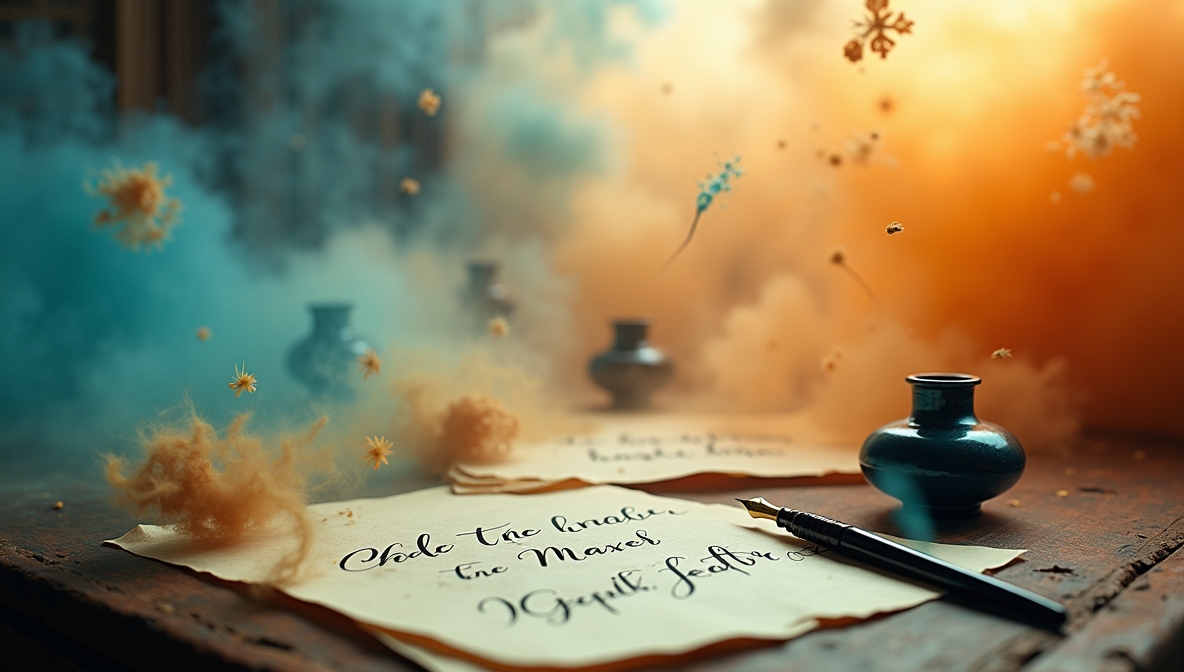Calligraphy has long been more than a tool for communication. It is an art form that combines precision, rhythm, and creativity. Its status as a respected artistic expression developed through centuries of cultural refinement, technological advancements, and artistic breakthroughs.
Origins of Calligraphy as an Art Form
Ancient Civilizations and Sacred Scripts
- China – Chinese calligraphy dates back over 2,000 years, deeply tied to philosophy and personal expression. Brushstrokes in works by Wang Xizhi and Ouyang Xun demonstrated mastery of movement and composition.
- Islamic Calligraphy – Arabic calligraphy flourished as a visual representation of religious devotion. Qur’anic inscriptions, geometric Kufic styles, and fluid Thuluth scripts turned writing into sacred art.
- Medieval Europe – Illuminated manuscripts such as the Book of Kells featured intricate calligraphy paired with ornate decorations. Monks preserved classical knowledge through disciplined handwriting.
The Role of Calligraphy in Cultural Identity
- In Japan, shodō (“the way of writing”) remains a respected practice linked to Zen principles.
- Persian Nasta’liq script blended fluidity with elegance, defining a signature style in poetry and literature.
- Latin script development influenced Renaissance-era typography, shaping modern Western calligraphy.
Calligraphy and the Evolution of Aesthetic Standards
The Influence of Artistic Movements
Calligraphy evolved alongside major artistic shifts:
- Renaissance – Humanist minuscule brought refined letterforms that influenced typefaces still in use today.
- Baroque & Rococo – Flourishing scripts featured ornamental swirls, reflecting the extravagance of the period.
- Modernism – Minimalist and abstract approaches in the 20th century redefined calligraphic styles.
From Utility to Artistic Mastery
- Initially, calligraphy served practical functions—record-keeping, religious texts, and legal documents.
- As print technology advanced, handwritten scripts became less of a necessity and more of a deliberate artistic choice.
- Calligraphers focused on composition, movement, and balance, shifting the perception of calligraphy from craft to fine art.
Technological Shifts and the Reinvention of Calligraphy
Impact of Printing and Digital Tools
- The printing press reduced reliance on handwritten scripts, but calligraphy adapted by influencing typography.
- Digital fonts mimic hand-lettered styles, yet skilled calligraphers remain sought after for their craftsmanship.
- In modern design, calligraphy is integrated into branding, signage, and fashion, keeping it relevant in contemporary aesthetics.
Revival in Contemporary Art
- Hand-lettering and brush calligraphy surged in popularity through social media and online learning platforms.
- Artists blend traditional techniques with experimental materials, such as graffiti calligraphy and abstract typographic art.
- The resurgence of handmade crafts elevated calligraphy as an artisanal practice with global recognition.
Calligraphy’s Status in Fine Art and Education
Calligraphy in Art Galleries and Museums
- Historic calligraphic works are displayed alongside paintings and sculptures in prestigious institutions.
- Contemporary calligraphers collaborate with mixed-media artists, further cementing its artistic legitimacy.
Education and Calligraphy’s Role in Skill Development
- Practicing calligraphy improves hand-eye coordination, patience, and artistic sensibility.
- Universities and art schools offer specialized courses, reinforcing its value as a discipline.
Cultural Preservation and Calligraphy’s Enduring Legacy
- Museums and organizations work to preserve ancient scripts and techniques.
- Calligraphic traditions are passed down through apprenticeships, ensuring continuity.
- Public appreciation continues to grow, with festivals and exhibitions dedicated to calligraphic arts.
Calligraphy stands as both a historical record and a living, evolving form of artistic expression. It transcends language barriers, offering a universal appreciation for beauty, discipline, and creativity.


